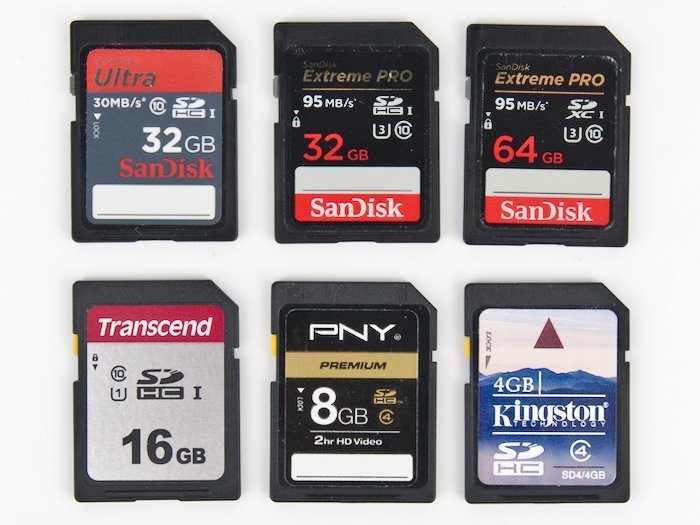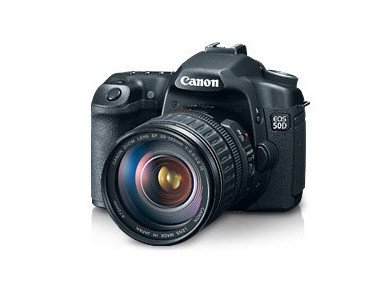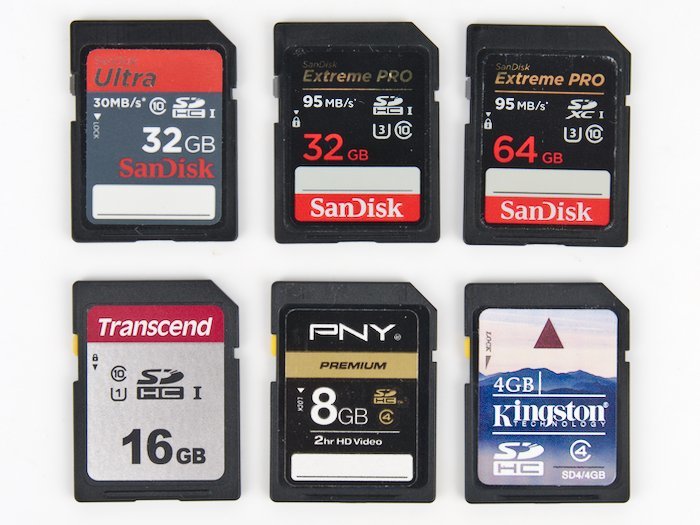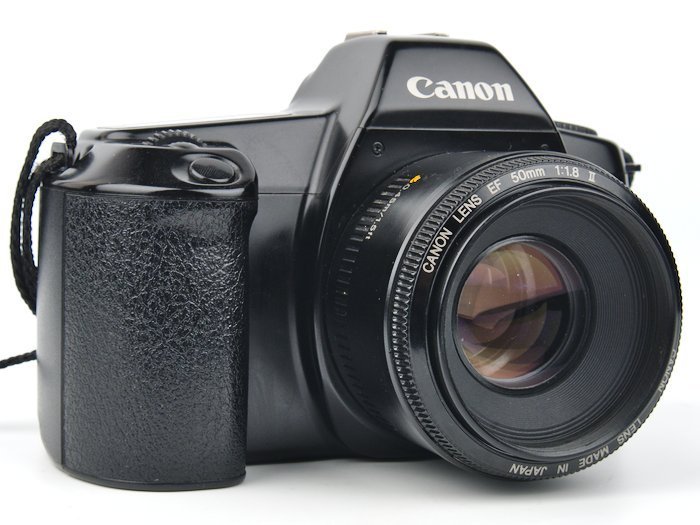
Canon EOS Rebel / Rebel S 35mm Film SLR
- Nathaniel Stephan
- Canon eos rebel , Canon eos rebel s , 35mm film
- September 17, 2019
Table of Contents
Introduced in 1990, the Canon EOS Rebel is the first camera to have the Rebel branding. The Canon EOS Rebel S is the same camera, but with a built in flash.
In Europe the camera was called the Canon EOS 1000F and EOS 1000F QD. Both of those had a built in flash, with the QD model having a quartz date back.
In Japan the camera was released as the Canon EOS 1000F QD-P. The P designated that the camera had a panorama mode.
The camera was replaced in 1992 by the Canon EOS Rebel II and Rebel SII.
Camera Battery - 2CR5
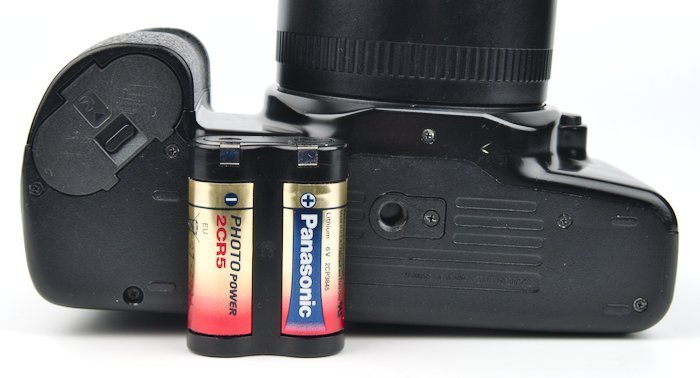
The camera is powered an 2CR5 battery. This battery can be found in most stores, but it is expensive.
Later models such as the Canon EOS Rebel G, use 2x CR123A batteries. These are less expensive and rechargeable versions are available.
Unlike mechanical cameras, such as the Canon FT QL, the Rebel needs a battery in order to operate.
You will save around $5 by buying 2CR5 batteries online. The best practice is to always have an extra battery with you, otherwise, your photography might come to an abrupt end.
Affiliate Advertising Disclosure
Outside the Shot is a participant in the Amazon Services LLC Associates Program, an affiliate advertising program designed to provide a means for sites to earn advertising fees by advertising and linking to Amazon.com.
As an eBay Partner, I may be compensated if you make a purchase. I also participate in affiliate advertising programs with KEH and Adorama. More can be found on the Affiliate Disclosure page.
Price & Where to Buy
The Canon Rebel can easily be found all over the place. Thrift stores, garage sales, Craigslist, Facebook groups, and online.
eBay tends to have the best prices and largest selection online. Plus, many cameras available will be bundled with additional Canon lenses and accessories.
Your best option is to check the current eBay prices. The camera and a kit lens should not be expensive.
Canon EOS Rebel G Manual
A PDF scan of the Canon EOS Rebel manual can be found on Butkus.org. The manual is great to have in case you don’t understand a specific feature of the camera.
Shutter Speeds
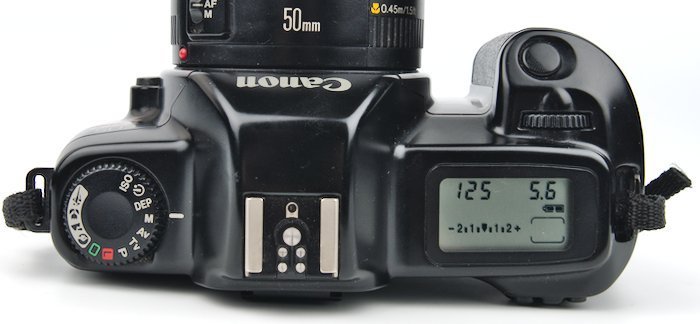
Shutter speeds range from 30 seconds to 1/1000 of a second in half stop increments. Maximum flash sync is 1/90 of a second.
There is a bulb mode for long exposures. Using the bulb mode will drain the camera battery, as power is used to keep the mirror up and shutter open.
Depending on how long your exposure is going to be, you may want to use a new battery. Don’t risk having your shot ruined and time wasted because you didn’t use a fresh battery.
The camera also has an electronically controlled 10 second self timer. When activated the camera will slowly beep. Towards the end of the countdown the camera will beep at a faster rate.
Shooting Modes
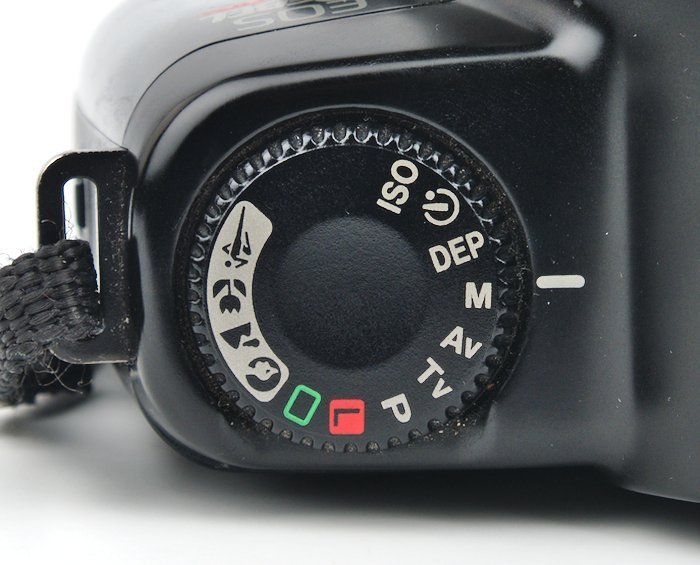
All of the advanced exposure modes you would expect from a modern camera are present. The Canon Rebel has:
- Auto Exposure
- Aperture Priority
- Shutter Priority
- Program Mode
- Manual Mode
There are 4 Auto Program shooting modes. These modes use settings that will give a better result that auto for specific types of scenes. They are:
- Portrait
- Landscape
- Close-Up
- Action
Continuous Frame Rate
The Canon EOS Rebel is able to shoot at continuously at about 1 fps. That’s not very fast, but then again it is not the type of camera you’d want to use for burst shooting.
If you want a camera capable of a faster frame rate, look for a Canon Elan 7.
What Kind of Film Does the Camera Use?
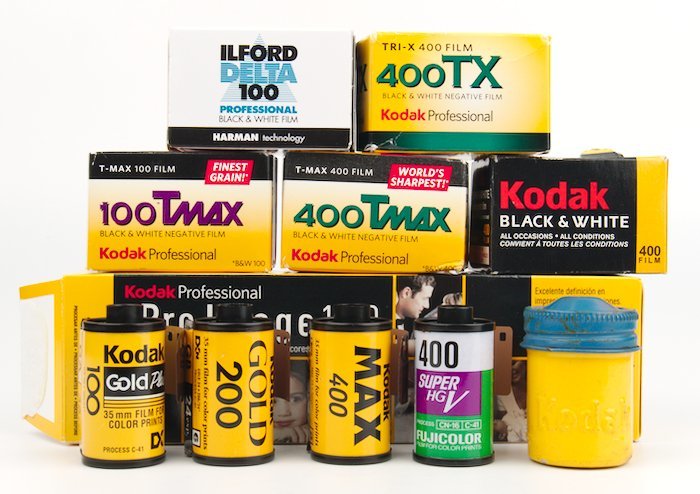
The Canon Rebel uses 35mm film. This is the most common film available. The light tight metal cassettes make it possible to load the film in the daylight.
A variety of black & white and color film is available. You might be able to find rolls for sale at Walgreens, CVS, Walmart, and other stores.
Those same stores will also be able to develop the film for you. However, they no longer do the development in store. They mail the film off to a lab to be developed and you will not get your developed negatives back.
You don’t need to use a store to develop your 35mm film. Instead you can just mail the film off yourself to a photo lab, such as The Darkroom.
What film to use?
400 ISO is my default recommendation for any camera. The film is fast enough to use indoor and shade. In direct sunshine, the film is not so fast that getting a proper exposure with the Canon Rebel’s 1/1000 maximum shutter speed is impossible.
Film with a lower ISO, like 100, requires more light to expose properly. This means using a larger aperture or longer shutter speed if you’re not in sunlight.
The 35-80mm kit lens that comes with the Rebel has a maximum aperture of f/4. That is not very large and will make the camera difficult to shoot in low light unless a flash is used.
Unless you get the Rebel S, not having a built in flash is going to make things difficult. It would be better to buy a newer camera in the Rebel line than a flash.
Unless you are going to be in full sun or use a flash, I would advise against using ISO 100 film. If you will have lots of light or are comfortable with using a flash ISO 100 film will produce images with less grain than ISO 400 film.
Infrared Film Can be Used
Unlike some of the other cameras in the Rebel lineup, infrared film can be used.
Newer cameras can not use infrared film because they have infrared sensors to control the automatic film advance. The sensors will fog the film, making it unusable.
Film ISO Settings
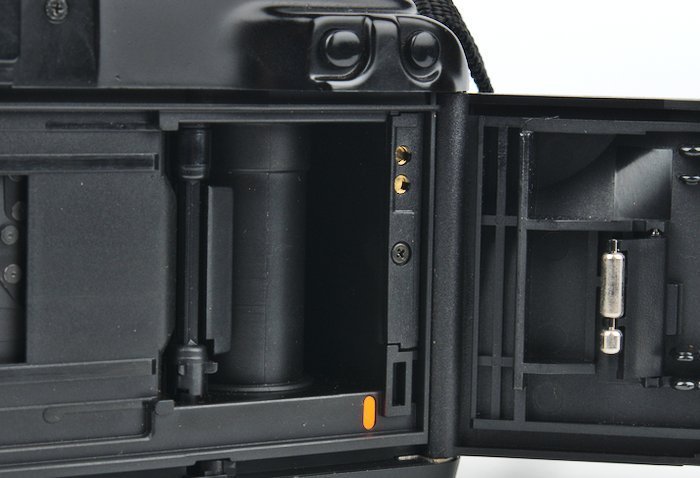
The camera has an ISO range of 25-5000 for DX-coded film. The automatic ISO setting from the DX-coded film can be overwritten through the same process needed to set the ISO for non-DX-coded film.
For non-DX coded film, the ISO can be manually set from 6-6400. This is done by setting the control dial to the ISO setting and rotating the command dial.
Viewfinder & Metering
The viewfinder is a pentamirror instead of a higher quality pentaprism. One benefit is that a pentamirror weighs less. The light weight will make the camera more enjoyable to carry around and is fine for casual shooting.
Metering is center weighted. This is standard for all film cameras released in the previous 2 decades. There are no problems with the camera’s ability to selects the correct exposure.
Auto Focus
The camera has 1 autofocus point. You’re going to have to focus on your subject and recompose to get attractive photos. This can be done through the focus lock.
If you do not have previous experience with film cameras, this will be a departure from using a modern digital camera.
Canon EF Lens Mount
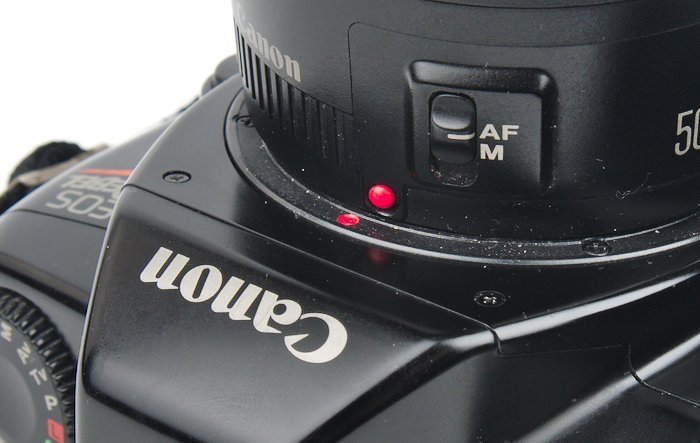
Any Canon EF lens can be used on the camera. These are full-frame lenses that can also be used on Canon DSLRs.
Compatible Canon EOS lenses will have a red dot indicating the correct position for mounting the lens to the camera.
EF-S lenses designed for DX digital cameras will not work. The lens mount looks similar to an EF lens. You can tell the difference because EF-S lenses have a white square to indicate where to mount the lens.
Recommended Lenses to Use
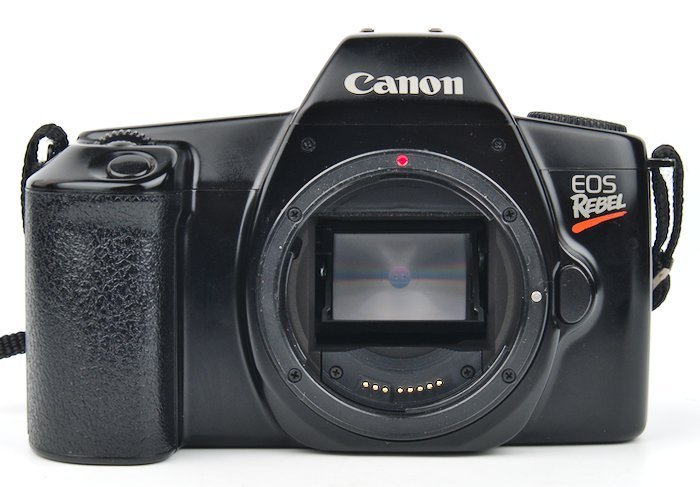
The lenses recommended are in line with the cost of the camera. It doesn’t make sense to recommend a $2,000 lens for a camera you can find for $5 at a garage sale.
If you want the best performance for the money, get a 50mm or 28mm prime lens. Zooms are easier to use, but the image quality will not be as good as you can get from a prime.
- Canon EF 50mm f/1.8 (Amazon)
- Canon EF 28mm f/2.8 (Amazon)
- Canon EF 35-80mm f/4-5.6 (Amazon)
- Canon EF 80-200mm f/4.5-5.6 (Amazon)
- Canon EF 100-200mm f/4.5 (eBay)
Camera Accessories
Grip Extension GR-70
The GR-70 is a grip extension. It is useful if you have large hands, but may be difficult to find for sale.
Canon Speedlites
These are the Speedlites that Canon listed in the camera manual for use with the Rebel. Newer speedlites can be used and will have faster refresh rates and other benefits.
- 200E Speedlite
- 300EZ Speedlite
- 430EZ Speedlite
Multiple Exposures & Bracketing
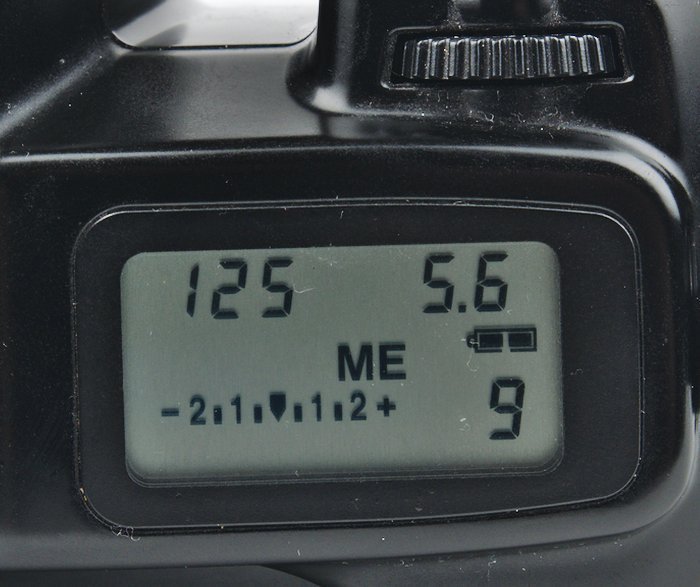
Multiple exposures can be taken by pressing the exposure compensation button and the partial meter button at the same time. “ME” will then be displayed on the LCD.
Turning the input dial will allow you to specify how many exposures you want. The maximum you can do is 9.
Once set you can press the shutter button to begin taking the series of multiple exposures.
After all the exposures have been taken, the film will advance to the next frame.
To clear the preset exposures, repeat the steps, and set the number of exposures to 1.
My Short Review of the Camera
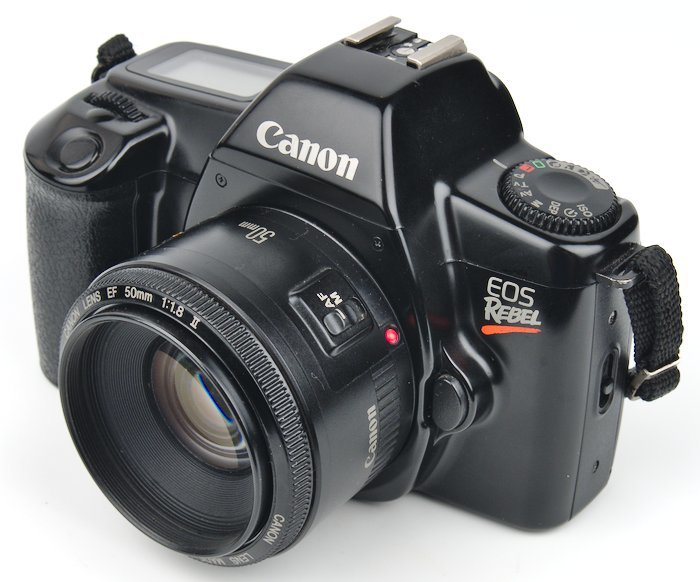
Overall, I would give the camera 2 stars out of 5.
My problems with the Rebel come down to the camera cost. The battery is expensive. Newer cameras in the Rebel line are also similarly priced and have better autofocus.
In my testing, the Rebel had problems focusing indoors, in shade, and with low contrast. The camera would hunt for focus, making it slow when it was able to find focus.
When tested against the Rebel G, which is a few generations newer, the difference was significant. The Rebel G consistently nailed focus with the same 50mm f/1.8 lens I used on the Rebel.
The body of the Rebel is also larger and heavier than the later models. This would be fine if it offered weather sealing, but it doesn’t.
Too many improvements were made to later generations of the camera for me to recommend the original Rebel to anyone.
Comparable Cameras
Canon EOS Rebel T2 (Europe - EOS 300X, Japan - Kiss 7)
For less than $40, you can get the last entry-level 35mm film SLR produced by Canon. The Rebel T2 is the best choice for an entry-level Canon EOS 35mm film camera.
Released in 2004, the Canon EOS Rebel T2 has 7 auto focus points, a higher frame rate, accurate autofocus in low light, better focusing speed, and a higher quality build than the Rebel.
It is also 14 years newer, so reliability should be better.
Canon EOS Elan 7 (Europe - EOS 30, Japan - EOS 7)
Released in October of 2000, the Canon EOS Elan 7 is a big step up in terms of build quality and features. It was targeted towards enthusiasts and advanced amateurs.
The EOS Elan 7 can be hard to find. When the camera does show up for sale on eBay they sell in the $100-$150 range with a kit lens.
Avoid the Elan 7e or EOS 33 as they have eye movement controlled autofocus detection. You’re supposed to look into the viewfinder at the focus point you want instead of needing to manually select the focus point.
The eye-controlled focus point detection did not work well. It was never included on any of Canon’s other cameras.
Nikon N65
The N65 was a competitor to the Canon EOS Rebel 2000. Notable differences are the better build quality, faster frame rate, and the Nikon F lens mount.
A good choice if you own F-mount lenses. Check out the Nikon N65 Camera Review.
